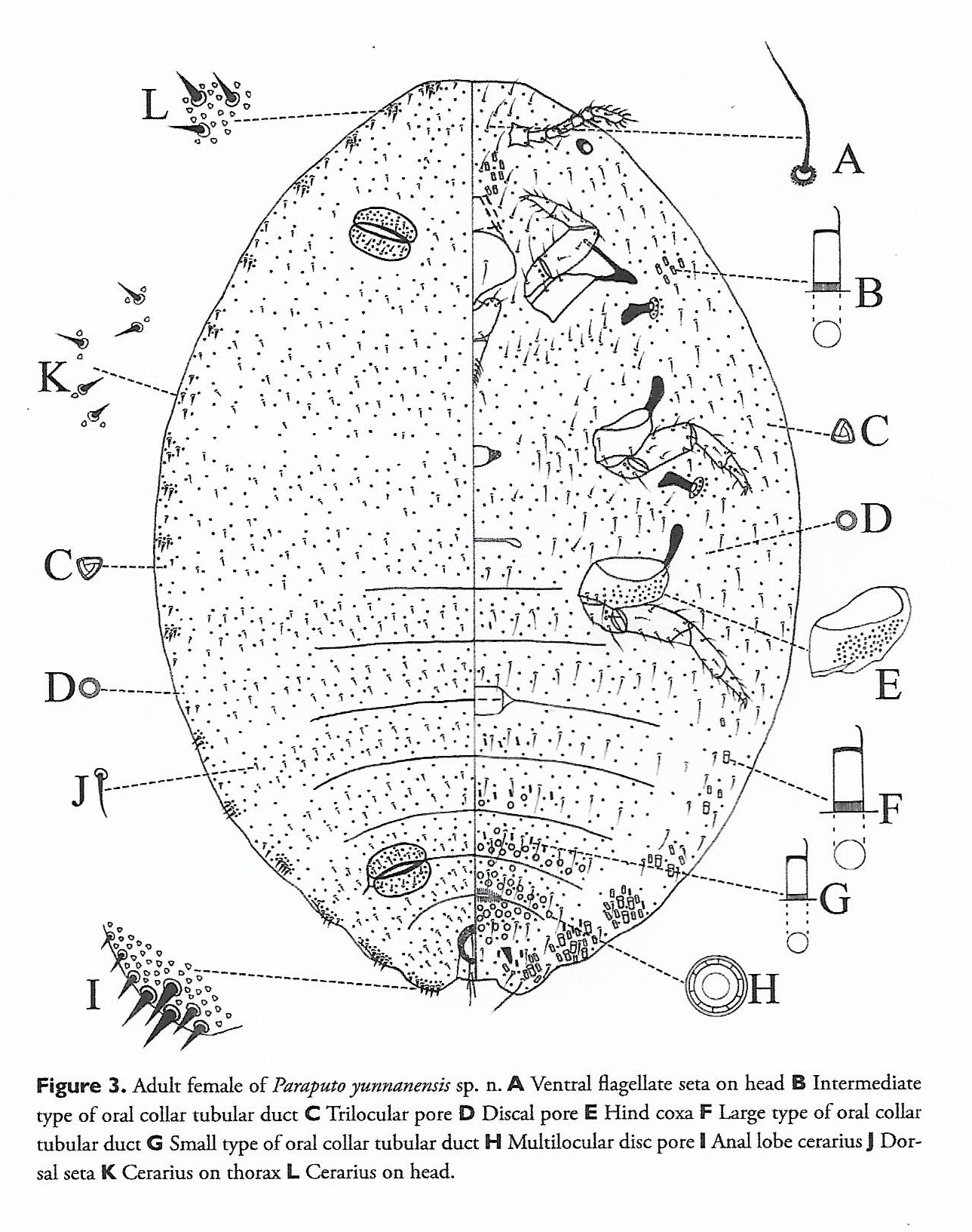Valid Names Results
Paraputo yunnanensis Zhang & Wu, 2017 (Pseudococcidae: Paraputo)Nomenclatural History
- Paraputo yunnanensis Zhang & Wu 2017: 65-67. Type data: CHINA: Yunnan, Lincang city, on Eriobotrya japonica (Rosaceae), 11/?/2015, by Yi-wei Fang. Holotype, female, by original designation Type depository: Beijing: Forestry University, Beijing, China; accepted valid name Notes: Paratypes. Five adult females, China: Yunan, Lincang city, on Eriobotrya japonica (Rosaceae), 3/?/2016, coll. Yi-wei Fang. Illustr.
Common Names
Ecological Associates
Hosts:
Families: 1 | Genera: 1
- Rosaceae
- Eriobotrya japonica | ZhangWu2017
Geographic Distribution
Countries: 1
- China
- Yunnan | ZhangWu2017
Keys
- LiuTaXi2025: pp.138-139 ( Adult (F) ) [Chinese species of Paraputo]
- LiZhWu2024: pp.479 ( Adult (F) ) [Chinese Paraputo]
- Tanaka2022: pp.342 ( Adult (F) ) [Paraputo species in East Asia]
- ZhangWu2017: pp.67 ( Adult (F) ) [Paraputo species from China]
Remarks
- Systematics: Paraputo yunnanensis is similar to P. banzigeri Williams in possessing oral collar tubular ducts on the head anterior to the clypeolabral shield, and in having the cerarii on the thorax sometimes indistinct. However, it differs from P. banzigeri Williams by the following features (condition of P. banzigeri Williams given in parentheses): (i) all the dorsal setae are short and pointed (dorsal setae on abdominal segment VIII much longer than other dorsal setae); (ii) translucent pores present only on hind coxa (pores not only present on hind coxa, but also on hind femur and hind tibia). (Zhang & Wu, 2017)
- Structure: Body of adult female on microscope slide broadly oval to rotund, 1.9–2.7 mm long and 1.4–1.9 mm wide. Anal lobes prominent, ventral surface of each lobe with small sclerotized area and apical seta 99–119 μm long; ratio of lengths of apical seta to anal ring seta 1: 0.68–0.86. (Zhang & Wu, 2017)
- General Remarks: Detailed description and illustration in Zhang & Wu, 2017.
Illustrations
Citations
- LiZhWu2024: key, 479
- LiuTaXi2025: key, 139
- Tanaka2022: key, 342
- ZhangWu2017: description, diagnosis, distribution, host, illustration, taxonomy, 65-67



